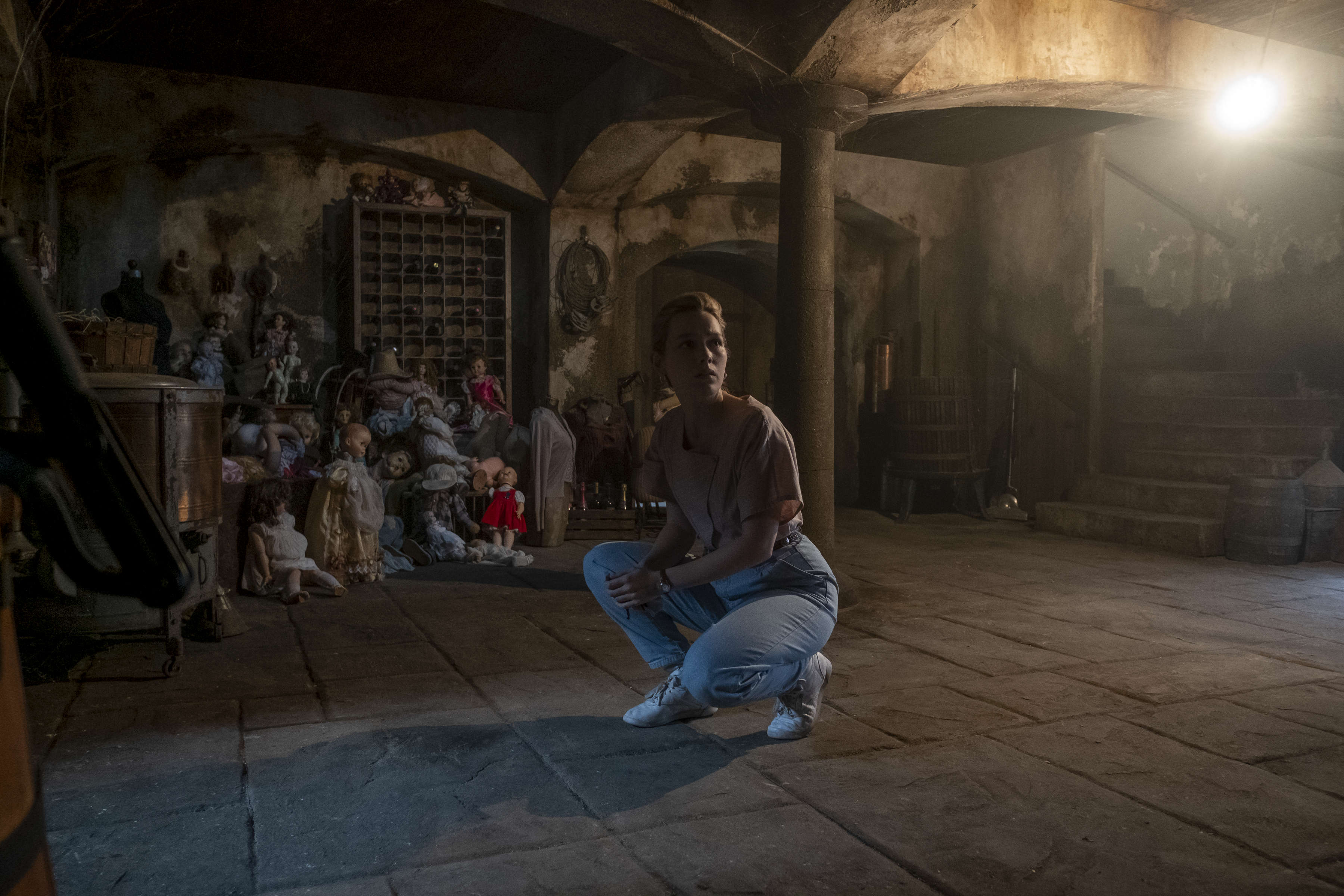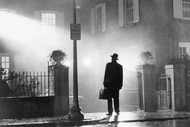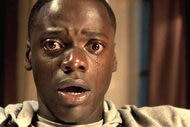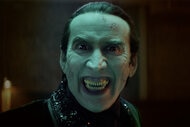Create a free profile to get unlimited access to exclusive videos, sweepstakes, and more!
10 Henry James works to read ahead of The Haunting of Bly Manor

This October, horror filmmaker Mike Flanagan is once again inviting us to explore a haunted house inspired by classic horror fiction. In 2018, Flanagan and his producing partner Trevor Macy brought us The Haunting of Hill House, a Netflix series inspired by Shirley Jackson's novel of the same name. Now, as we prepare to enter The Haunting of Bly Manor on Oct. 9, we're taking a close look at the literary inspiration for the new season: Henry James.
As the title suggests, this season of The Haunting will use James' classic ghost story The Turn of the Screw as a jumping-off point, but the literary inspirations don't end there. As Flanagan has already laid out in interviews, Bly Manor is more of a "remix" that takes the central concept from Turn of the Screw — a governess goes to a stately old house to care for a couple of children and finds spooky things there — and mixes it with ideas present in numerous other James stories, ghostly and otherwise.
While we won't know exactly how these Jamesian ideas are used in full until we've seen the whole series, we thought we'd get ready for Bly Manor with a bit of a Henry James primer, using story titles that have been floated by Flanagan himself in interviews, stories that have reportedly been used as episode titles for the series, and stories that just seem to align with the ghostly aura of the series in general. Before you watch The Haunting of Bly Manor, check out these classic Henry James tales to get a sense of the series' themes of longing, loss, and haunting romance.
The Turn of the Screw: We begin, naturally, with the story from which The Haunting of Bly Manor takes its name and setting, James' 1898 novella, which remains one of the most popular and influential ghost stories in the English language, as much for its ambiguity as for its creepy imagery. From the very beginning, as James sets up the story as something relayed to us secondhand by someone who just happens to have a written account of it, The Turn of the Screw is layered with little veils of obfuscation, little details that make the story harder to ever fully grasp. Is the governess at the heart of the story — the basis for Bly Manor's leading lady, Dani (Victoria Pedretti) — actually being tormented by the spirits of servants who came before her? Is it all in her head? Are the two clever children she's looking after playing elaborate tricks? James' patient, precise first-person narrative never gives us all the answers, but the ghostly aura of the story more than a century later is still just as effective, and perhaps that's the point. After all, if you spend the rest of your days feeling haunted, does it really matter if the ghosts weren't real?
"The Great Good Place": Bly Manor is firmly and deliberately a ghost story, as are many of James' most famous stories, but the inspirations for this series don't stop with the purely supernatural. Other James stories will also play a part, and one of them, if the episode titles floating around online are to be believed, is this rather strange tale from 1900. It follows a man who, after noticing the large amount of work that seems to be piling up for him around his house, basically wishes himself away to a kind of retreat where he's able to relax and take stock of his life with the help of a mysterious fellow guest. Is this retreat real, imagined, or some kind of fantasy world conjured up by an unseen force? The story never offers answers, but the sense of otherwordly intervention into an overwhelming modern life is palpable.
"The Romance of Certain Old Clothes": Mike Flanagan has cited this particular James story in interviews as being important to the development of Bly Manor, and certain promotional photos reveal the use of the family name "Lloyd" on a gravestone, which is likely drawn from this tale. It's one of James' more direct Gothic stories, both in terms of setup and payoff, and concerns two sisters who happen to fall in love with the same man. Naturally, he must choose, and in so choosing he sends the sisters on very different paths, which nonetheless manage to converge on each other by the end of the story. The title refers to one sister's collection of elegant, expensive clothing, and the other sister's overpowering desire to possess it for herself even as it sits locked away in an attic. Is that the same attic we've seen in the Bly Manor trailers, and are we in for a ghostly surprise similar to what waits at the end of this story? Perhaps, perhaps ...
"The Pupil": Like much of the story of The Turn of the Screw, this James tale from 1891 centers on a mysterious, seemingly wise-beyond-his-years child, though this particular tale hinges less on horror and more on pure tragedy. The pupil of the title is a clever young man whose family hires a tutor for him. The two form a bond. Driven by the pupil's brilliance and otherworldliness, the tutor offers to stick around even as the family who hired him can't seem to afford to pay. Of course, despite their connection, there are other forces at work here, and James uses the emotional bonds built up over the course of the story to really twist the knife by the end. Flanagan has noted in interviews that Bly Manor is about several different kinds of love stories, and this particular James tale certainly uses its own love to devastating effect.
"The Altar of the Dead": We've seen hints in promotional photos and trailers from Bly Manor of altars decorated by prayer candles, some lit and some very clearly abandoned, and that may very well be a nod to this haunting, though not explicitly ghostly, story. It follows a man who, as he ages, grows more and more preoccupied with keeping the memory of loved ones who've died before him alive, through praying for them and lighting candles at an altar — so much so that James characterizes his reverence for the dead as a religion unto itself. When the man meets a woman who seems to share the same preoccupation, he realizes that they share a connection in the form of a dead man, one whom she lights a candle for but he, for the sake of an old grudge, decidedly does not. Heavy with the emotional and thematic weight of graveyards, prayer candles, and old scores never settled, this story is filled with the kind of longing and haunting memory that Flanagan has spoken about in interviews for Bly Manor, and is one of James' most effective stories.
"The Jolly Corner": Another story directly name-checked in interviews promoting Bly Manor, "The Jolly Corner" is also one of James' most experimental Gothic tales. While it takes a while to coalesce, once it's finally clear what's happening, the effect is truly chilling. The story follows a man who returns to his boyhood home in New York City to oversee the renovations of a property he's inherited and used as a source of income for years. Despite enjoying his life abroad, once the work of tending to the property is underway, our protagonist realizes he's actually quite good at managing property, and begins to dwell on the kind of life he might have lived had he stayed in New York and made that his life's work. As the thoughts consume him, the man begins to sense that his alternate self — the one who might have dwelled on that "jolly corner" his whole life — is manifesting in the building, haunting him. It's both a ghost story and a doppelganger story, and the Bly Manor trailer has hinted that we might see a version of it come to creepy life on the show.
"The Two Faces": One of James' shortest stories is also one of his most direct. "The Two Faces" is a lean, mean tale of societal revenge in which a woman is asked by a former love interest if she will help his new wife to fit into society. The woman agrees, but as the title of the tale suggests, her true motives are hidden. There are no ghosts here, ambiguous or otherwise, but there is a sense of pure human nastiness that may help inform Bly Manor and its many characters, living or dead.
"The Way It Came": One of James' most intriguingly constructed ghost stories also hinges on the sense of longing and lost love that Flanagan has spoken so frequently of in interviews to promote Bly Manor. "The Way It Came" hinges on two people who have never met, but in a tale written by their mutual acquaintance they seem to share a great deal. Most notably, both of these unnamed people had a psychic experience in which they saw their parents appear to them just before they died. As the story begins, the narrator is eager to introduce her friends to each other, confident that their shared experience and other strange shared traits will create a bond. From there, the story twists and turns until it builds to an especially haunting climax built on supernatural connection, unfulfilled love, and a bond that seems to transcend death itself. This is perhaps the ultimate example of a haunted romance in James' supernatural fiction, and could prove especially influential in Bly Manor.
The Beast in the Jungle: One of the most striking things about Henry James' body of work in the realm of ghost stories and Gothic fiction is the sheer number of ways he can find to present his characters as haunted and still get the same effect on the reader. Yes, some of these stories have overt supernatural apparitions and creepy haunted homes, but others prove that human beings can be set upon by ghosts of a different sort. In the case of his novella The Beast in the Jungle, the title "beast" is not a creature, but a feeling, a sense of fatalistic doom that hangs over a man's life even as happiness seems to dangle right in front of him. It's the story of a man so crippled by fear of some unspoken future catastrophe that he can't seize the joy that lies before him, no matter how much he might want to. In that way, it's a truly chilling story as much for what doesn't happen as what does.
"The Ghostly Rental": Full disclosure: I have no idea if this story has any bearing on The Haunting of Bly Manor. I haven't seen it floated as an episode title, read about it in interviews, or seen hints of it in trailers. I just like it a lot, so let's consider it a bonus story. "The Ghostly Rental" is about a young man who, were he alive right now, would probably be one of those guys who straps a GoPro to his head and does urban exploring of haunted houses on YouTube. Over the course of the story, he becomes fascinated with an old house he spots on a walk one night, the strange old man who occasionally visits it, and whatever might be going on inside. As his fascination builds, he tracks down local gossip and even seeks out the man himself to try to solve the mystery of this seemingly haunted old house, and what he finds is both shocking and, from a narrative standpoint, rather clever. If you like James' ghost stories, don't miss this one.
The Haunting of Bly Manor premieres Oct. 9 on Netflix.
The views and opinions expressed in this article are the author's, and do not necessarily reflect those of SYFY WIRE, SYFY, or NBC Universal.

























